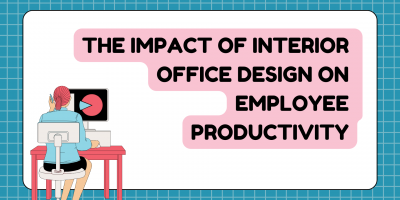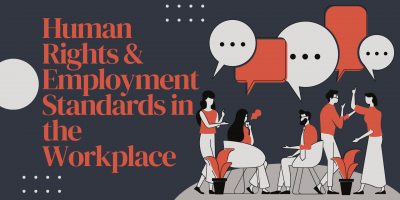
The Impact of Interior Office Design on Employee Productivity
How does interior office design impact employee productivity, from desk layout to lighting choices?

Hiring globally and managing HR for a growing team comes with its own set of challenges.
Two popular solutions to address this are the Employer of Record (EOR) and the Professional Employer Organization (PEO).
But what exactly are they, and which one fits your needs?
This article compares employer of record vs PEO in terms of how they work, key differences, costs, and best use cases.
An employer of record is a third-party organization that serves as the official employer for your workers on paper.
The EOR hires and pays employees on your behalf and, by doing so, takes on responsibilities like:
Essentially, you manage the day-to-day work of your team, while the EOR handles all the employment paperwork and liabilities.
Most importantly, these arrangements allow companies to hire in a new state or country without setting up a local entity or subsidiary.
For example, if you need to quickly onboard an employee in France and another in Canada, an EOR can help you legally hire both employees in their respective countries in a matter of weeks.
As companies search for talent globally, the EOR model has become increasingly more popular, with an estimation that the value of the global EOR market will be between USD 3.1 billion and USD 3.4 billion by 2025, and USD 10 billion by 2028.




A PEO is an HR outsourcing firm that enters a co-employment arrangement with a client company.
In a PEO relationship, your business and the PEO both employ the workers: you remain the employer for routine duties, while the PEO becomes the administrative employer for payroll, benefits, and HR compliance.
The use of PEOs allows smaller companies to offer big-company benefits and remain compliant with employment regulations without building an in-house HR department.
As a result, recent PEO trends indicate an increasing popularity of this type of work arrangement, especially among small and mid-size employers.
The average return on investment from using a PEO is estimated at 27% in cost savings from reduced HR expenses and improved employee retention.
The PEO industry currently serves around 175,000 businesses and 3.7 million worksite employees in the U.S., and these numbers grow every year.



While both PEOs and EORs relieve companies of some HR administrative burdens, they are not the same. Below are the key differences between an employer of record and a PEO.
The main difference between an employer of record vs PEO is that a PEO acts as a co-employer alongside your business. In contrast, an EOR is the sole legal employer of the worker on paper.
That said, working with an EOR means giving up a degree of control over certain HR functions, since the EOR is the legal employer. In contrast, a PEO lets you stay in charge of all HR decisions while they carry out the day-to-day administration on your behalf.
Using an EOR does not require your business to establish a local legal entity in the target state or country – the EOR’s entity covers your hires.
With a PEO, you must have an existing entity in the jurisdiction because the PEO can only “co-employ” personnel together with your registered company.
Traditional PEOs typically operate only within one country or region and are built to support domestic operations, not international growth.
Therefore, if you need to hire in a new country where you have no entity, a PEO alone isn’t enough. Instead, you will need to find a local partner or an EOR.
EORs, on the other hand, are designed for global reach.
They already operate legal entities in different countries and have the infrastructure in place to support international hiring.
Since an EOR acts as the official employer in the eyes of the law, it also assumes full liability and handles all compliance obligations.
With a PEO, things work differently. Since you’re in a co-employment setup, you share the legal responsibilities, including submitting accurate time records and tax information.
A PEO can guide you through compliance issues and offer support, but you’re still the one ultimately accountable for following the law and managing your company’s risk.

When might an EOR be the better fit for your organization’s needs?
If your company’s growth plans involve hiring in new countries or regions where you don’t have an entity, an EOR is likely the best solution.
Perhaps you found the perfect candidate living in a state where you’re not registered to do business. Rather than turn them away, you could use an EOR service to employ them legally.
Moreover, EORs are also useful for pilot projects and market testing.
If you’re unsure about a long-term commitment in a country, using an EOR lets you hire a few employees to test the waters without establishing a permanent branch.
Just to put things in perspective, setting up a foreign subsidiary can cost hundreds of thousands of dollars and six to nine months of effort.
With an EOR, you skip this red tape and massive upfront investment and gain a faster path to global expansion.
If your company is U.S.-based and you need help managing HR tasks, a PEO could be the right choice.
PEOs are ideal for organizations that want to streamline HR administration and offer better benefits to employees without relinquishing full control of their workforce.
For example, a growing tech startup with 50 employees in the U.S. might use a PEO to handle payroll, provide Fortune 500-level health insurance options, and manage HR compliance as it hires in multiple states.
Another scenario for choosing a PEO is when you are hiring across multiple jurisdictions domestically. In the United States, employment laws differ by state. A PEO can help you navigate different state regulations on payroll taxes, unemployment insurance, and workers’ compensation.
The benefits are clear: businesses that engage PEOs often report saving time on administrative tasks and reducing compliance headaches.
In fact, companies using PEOs have been found to grow 7–9% faster and have 10–14% lower turnover than those that don’t, according to PEO statistics.

Cost is often a deciding factor in the employer of record vs PEO decision. Both models have a similar pricing structure.
PEOs typically charge either:
For example, a PEO might charge around 5–10% of total payroll or a set dollar amount per worker each pay period.
However, many PEOs require a minimum headcount, usually between five to ten employees. By pooling employees, PEOs can often negotiate lower insurance premiums or workers’ comp rates for clients.
EORs, on the other hand, usually charge a flat monthly fee per employee, generally higher than a PEO’s fee, because the EOR assumes greater liability and provides a full legal employment infrastructure.
For a company with only one or a few international employees, those EOR fees may still be far more cost-effective than the alternative of setting up a local subsidiary and hiring legal and HR staff to run it.
It’s also worth noting that some EOR providers offer volume discounts as you hire more employees.
Perhaps the biggest and most important difference between an employer of record vs PEO lies in how risk and compliance are handled.
With an EOR, you entrust a third party to be the legal employer.
In other words, they are responsible for staying up to date with labor laws, employment contracts, and any other deductions in the host country.
If any employment-related issue arises, the EOR as the legal employer is the one that generally must address it.
Your company is one step removed from those legal proceedings, which can insulate you from fines or penalties in many cases.
In a PEO arrangement, the risk is shared more.
The PEO will help you follow regulations, but since your business is a co-employer, your company can still be named in legal action or held liable if something goes wrong.
So, it’s important to determine which solution fits your organization’s needs better – an employer of record vs PEO.
The answer entirely depends on your company’s circumstances and goals.
Consider the scope of your operations, where your employees are (or will be) located, how much control you have, and the level of risk you’re willing to manage.
Many growing companies use both models: a PEO for their U.S. team and an EOR for international hires.
The good news is that neither option is mutually exclusive or permanent.
Start with an EOR to enter a new market, then switch to a PEO or your own entity later. Or, begin with a PEO and bring HR in-house as you scale.
In the end, the decision between an Employer of Record vs PEO is not about which is “better” overall, but which is better for your specific context.
Disclosure: Some of the products featured in this blog post may come from our partners who compensate us. This might influence the selection of products we feature and their placement and presentation on the page. However, it does not impact our evaluations; our opinions are our own. The information provided in this post is for general informational purposes only.
Senior Content Writer at Shortlister
Browse our curated list of vendors to find the best solution for your needs.
Subscribe to our newsletter for the latest trends, expert tips, and workplace insights!

How does interior office design impact employee productivity, from desk layout to lighting choices?

What happens when salary ranges go public? Discover how transparency laws are changing the workplace in 2025 – and what’s next.

Is the idea and perception of “a good job” changing? Explore how modern work expectations are reshaping career satisfaction.

In an era of unprecedented corporate power, can we still safeguard the dignity of every worker amid the relentless quest for profit?
Used by most of the top employee benefits consultants in the US, Shortlister is where you can find, research and select HR and benefits vendors for your clients.
Shortlister helps you reach your ideal prospects. Claim your free account to control your message and receive employer, consultant and health plan leads.